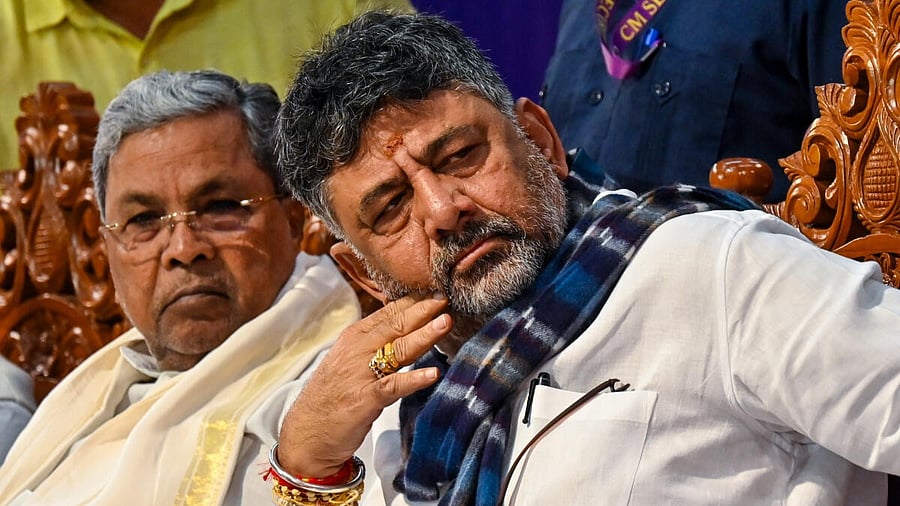
Chief Minister Siddaramaiah and Deputy Chief Minister DK Shivakumar.
Credit: DH Photo
When the Congress returned to power in Karnataka in 2023, the first major challenge was not administrative but political: choosing between Siddaramaiah and D K Shivakumar for the Chief Minister’s post. After days of infighting and intense negotiations in Delhi, Siddaramaiah was selected as Chief Minister while Shivakumar was made Deputy Chief Minister. Rumours of a ‘2.5-year formula’ that circulated then – with Siddaramaiah handing over the reins mid-term – have now grown into open demands. A group of MLAs aligned with Shivakumar rushed to Delhi to press the High Command to honour what they claim was a commitment made in 2023. Senior ministers have publicly stated that no such agreement existed and that Siddaramaiah was elected for a full term. The Congress leadership’s silence has only deepened the uncertainty.
Adding to the confusion is Siddaramaiah’s own ambiguous messaging. Though he had twice declared – before the 2018 and 2023 elections – that they would be his last, he has now hinted he may contest once more under pressure from his supporters. He has swung between claiming he will complete the full term and saying he will continue only at the High Command’s pleasure, even asserting he will present next year’s budget, further fuelling speculation. Another twist is the widespread belief that he hopes to remain in office until January or February 2026, when he is expected to break D Devaraj Urs’s record as the longest-serving chief minister. Meanwhile, Shivakumar’s announcement that he would quit as KPCC president has only added to the theatre, intensifying rumours that he has received the green signal from the leadership.
While these may appear to be internal matters for the Congress, the impact of this perpetual leadership suspense on governance is deeply disconcerting. Political ambiguity inevitably weakens the administration: senior bureaucrats, unsure who will lead the government in the months ahead, adopt a wait-and-watch approach, and files needing strong political backing remain stuck. Governance slows down as the administration waits for clarity. Ministers, too, tread cautiously, wary of aligning too closely with either leader. Many observers already note that Siddaramaiah appears less assertive than in his earlier tenure, while Shivakumar’s camp grows increasingly restless. In such a climate, governance becomes the first casualty. The Congress High Command must end this drift. If it intends to replace Siddaramaiah, it should do so promptly. If not, it must unequivocally affirm that he will lead the government until 2028. At a time when Karnataka is consolidating its position as India’s growth engine, uncertainty at the top is the one risk it simply cannot afford.
